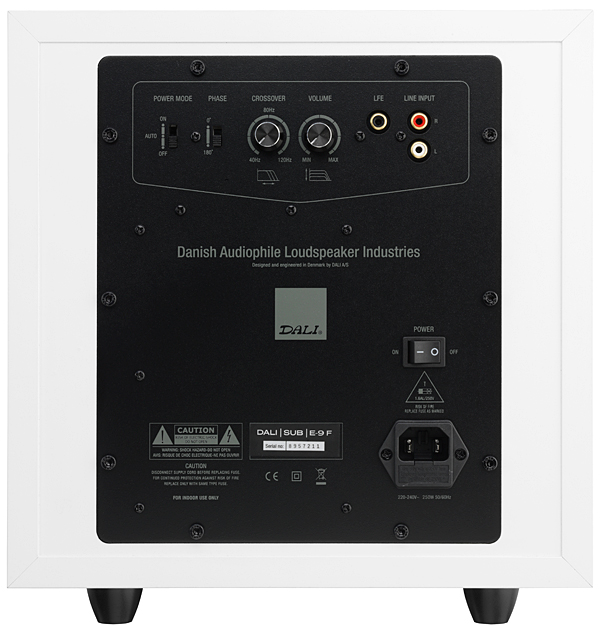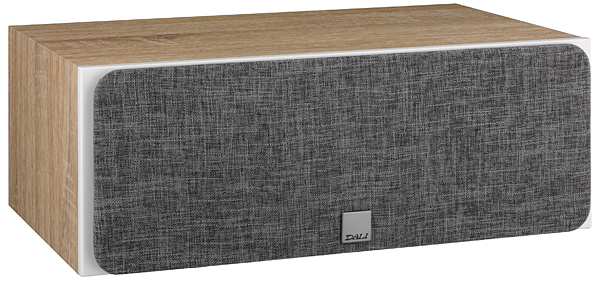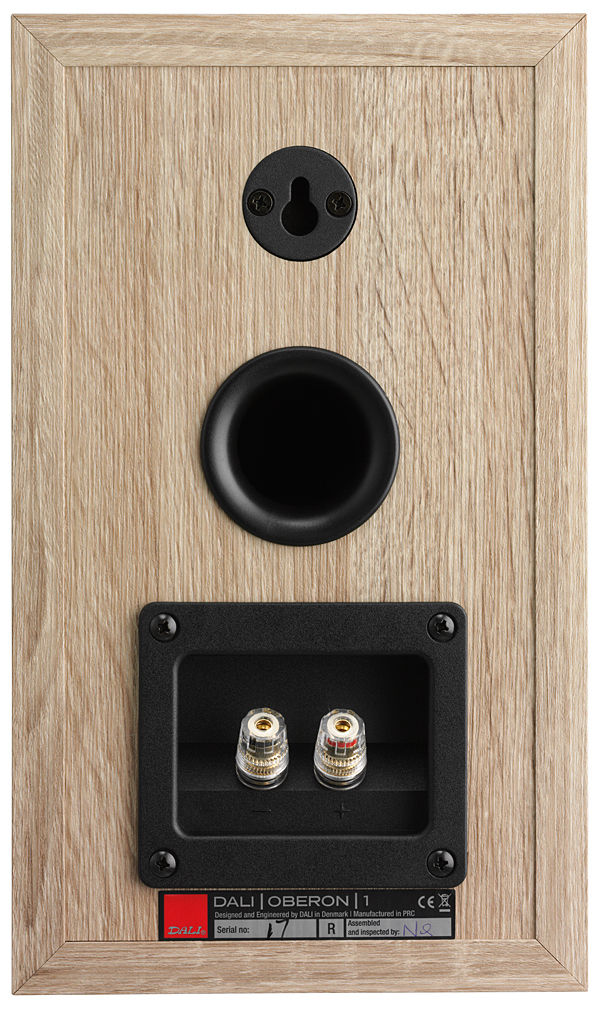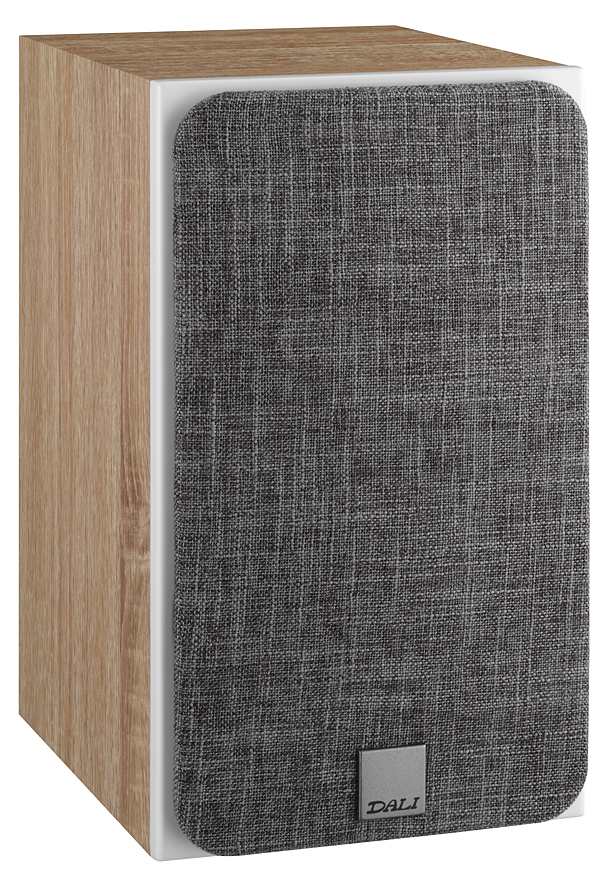I own set like this but with Oberon 7 fronts. Really great set for price, Big, rich and warm sound, never thin or tiring! Highly recommended!
Dali Oberon 5.1 Speaker System Review Page 2
With a strong low D in the bass, Donald Fagen's "Morph the Cat" from the album of that name (a Qobuz high-res stream) is my current bass-extension hot-read. The Oberon 1s did solid work in at least suggesting the 36 Hz fundamental, making for only a modest sacrifice in the overall listening experience (one the little DALI subwoofer entirely erased, but more on that later).

Treble detail, transparency, air? Check: Delicate cymbal brushwork and subtle hand percussion in a range of Afro- Cuban jazz tracks streamed from a Tidal hi-res playlist sounded lifelike and present. DALI explicitly recommends that users refrain from toeing-in their left/right setups, and I indeed found that when heard directly on-axis the Oberons sounded distinctly brighter. Set up straight out as suggested, treble balance seemed "right," and I noted no deficit of air or fine detail.
Spatial presentation and soundstage? Check—mostly. The Oberon 1s produced a nice impression of room depth on an admittedly unfamiliar (but sonically fine) recording of the nine Beethoven violin/piano sonatas streamed in hi-res from Qobuz, but one that was just a little bit amorphous when it came to instrument location. To confirm, I played my master-tape-rip of composer Kurt Weill's Three- penny Opera suite, a recording that I have listened to on count- less systems. The result was maybe a little less deep than my reference, and a shade less pinpoint, but still quite good and distinctly superior to the mass-market average.

Moving on to multichannel playback, I turned my attention to the Oberon Vokal center speaker. Two-way horizontal centers are often problematic since the lobing behavior of two spaced woofers usually comes into play somewhere near the vocal octaves. Nonetheless, the Vokal center proved to be a very good match with its Oberon 1 mates. The match wasn't perfect—the left/right pair sounded very slightly brighter on voices with generous upper-mids formants—but it was very close otherwise. Heard from well off-axis at the far end of my centered sofa, the Vokal did sound very slightly richer or "chestier" in the lower mids, but far less so than many a two-way center speaker I have auditioned. Like the Oberon 1s, the Vokal was happy to absorb considerable power, playing center-channel-heavy movie soundtracks at THX reference level (easily 6 or 8 dB louder than I prefer!) without exhibiting any obvious audible strain. So, another check.
On small-speaker systems like these DALIs, filmsound mostly involves the center and subwoofer units. And while I rate the Vokal to be a very competent center speaker, the compact DALI E-9F subwoofer is a little brute. (Is it my imagination, or are small subs as a class getting better?) While I usually regard under-10-inch designs as price-sheet solutions inadequate to the task of adding a meaningful octave of bass, at useful power levels, to small speakers, we can add DALI's 9-incher to the growing cohort of exceptions.

The E-9F had plenty of grunt to add the sub-40 Hz fundamentals right up to THX-reference level on the Fagen track mentioned above, which is loud indeed: perhaps 6 dB below club levels, but still much louder than I usually listen electively. (As an aside, with the E9-F subwoofer in support, the Oberon 1s themselves held their own very well at this volume, becoming only marginally "splitty" on things like snare drum hits—something that by no means all similarly small two-ways can claim.) And the E-9F did so with admirable poise: I heard no port noise or evidence of over-excursion, and what dynamic limiting did get imposed was not made manifest by any noticeable artifacts like pumping or fading. And all this held true even when I auditioned the DALI sub "naked," that is, with the left/right pair disconnected—save for a very mild degree of "thud" on a few notes, which I could not discern at all with the full system playing.
With all the Oberon virtues already observed, I was not at all surprised that challenging movie soundtracks like Mission Impossible: Fallout presented with genuine home-theater excitement and real-theater dynamic authority. The Parisian motorcycle chase zoomed across the screen with well-knit lateral cohesion, if little regard for geographic continuity, jumping arrondissements like an outtake from Leaper. The impressive E-9F subwoofer slammed the film's gala disco scene with gusto, but without excess thud or boom. For its part, the famous helicopter sequence chopped gleefully left and right, forward and back—but not up and down, since in the name of science I resisted adding Atmos elevation speaker modules to the 5.1-channel DALI speaker setup. (For the record, DALI does offer an on-wall/speaker-top elevation module, the $399/pair Alteco C-1, though that speaker's 10.5 x 7.75-inch footprint would significantly overhang the top surface of an Oberon 1.)

The surround pair of Oberon 1s operated effectively in my high, wall-washing shelf placements, as would, to be fair, pretty much any relatively accurate small two-ways. (Anachronist that I am, I still strongly prefer dipole surrounds for movies, but have come to concede that pretty much any small direct-radiating speakers reasonably free from overt colorations or dynamic limitations will work about equally well on ambient surround effects.)
The most dramatic payoff came at the closing credits of Mission Impossible: Fallout, when the famous theme first appears in full dress. (The MI canon is surely the only action franchise whose theme is in 5/4 time. Thank you, Lalo Schifrin.) At theater-like volume this was still startlingly crisp, clean, and bass-extended, with the bongos and timbales, though mixed well down, cutting effortlessly through. Wide, continuous, detailed orchestral sound and impactful dynamics confirmed what I'd already determined: DALI's compact, entry level system is a serious reproducer.
Conclusion
There's never a good time to be poor, but this seems like a particularly great era in which to be an impecunious audiophile. Honestly, people, the world is simply awash in really, really good and insanely affordable small two-way loudspeakers, to which pantheon I emphatically add DALI's Oberon 1. This is a world-class example of the sort of speaker that gets you 90 percent of the way there (and in some regards well past 90) for about 10 percent of the cost of pricier options, and the company's supporting E-9F sub is no less worthwhile. If you're a small-speaker/ big-value devotee, it could well become your object of devotion.
- Log in or register to post comments
























































